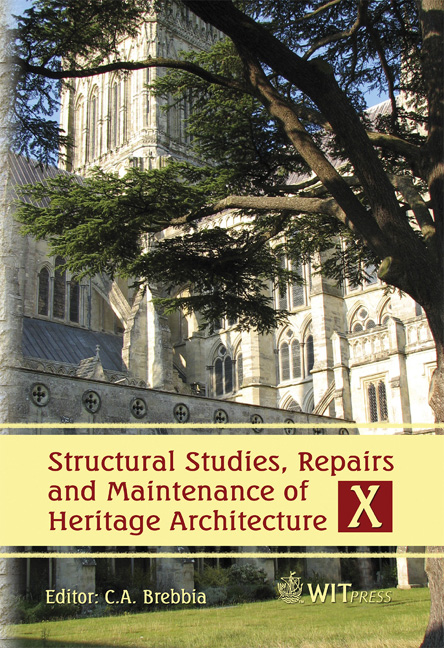Estimation Of Residual Carrying Capacity And Restoration Of The Historic Reinforced Concrete Shells And Frames Erected In Estonia
Price
Free (open access)
Transaction
Volume
95
Pages
11
Published
2007
Size
1,942 kb
Paper DOI
10.2495/STR070381
Copyright
WIT Press
Author(s)
H. Onton
Abstract
The purpose of the research work was to examine and analyze the technical situation and to work out a restoration solution for the hydroplane hangars reinforced concrete shells and frames erected in Estonia. The hydroplane hangars were designed and erected between 1915 and 1917 both in Tallinn and in Saaremaa, Estonia. Due to the fact that from the civil engineering point of view the most important structure is the reinforced concrete roof shell of the Tallinn hangar, will this paper mainly focus on this historical building. This large span structure consists of three spherical and seven cylindrical reinforced concrete roof shells and four two-storey towers. It is the first concrete structure of this type in the whole world, designed and erected at the beginning of the 20th century. Because of very bad maintenance during recent decades and due to the absence of roofing, windows and doors, water and moisture have been able to penetrate the concrete surface, causing moisture and frost damage of the concrete. To determine the mineralogical composition of cement stone, an X-ray analysis was performed. Strength analyses were carried out according to EPNENV codes. We can say that most axial and shear forces and bending moments are relatively small. This is the reason why the badly damaged structure has not yet partly or wholly collapsed. The restoration works were begun in autumn 2001 with the central part of the hangar. It was decided to carry out only extremely urgent works. Keywords: national heritage, residual carrying capacity, restoration.
Keywords
national heritage, residual carrying capacity, restoration.




